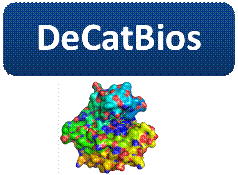Introduction
Sustainable biocatalytic processes rely on efficient enzymes and their capability to perform selective chemical reactions. A major limitation of applied biocatalysis development is the lack of robust enzymes with high catalytic efficiency on non-natural substrates in non-natural environments. Therefore, a strong focus in current enzyme biotechnology is on exploiting the natural and laboratory-generated diversity of enzymes. New enzymes variants with higher thermostability and catalytic activity would drive the spectrum of biocatalytic processes into new directions.
Glutathione transferases (GSTs) are phase II detoxification enzymes involved in cellular detoxification by catalyzing the nucleophilic attack of glutathione (GSH) on the electrophilic center of a number of toxic compounds such as triazine and chloroacetanilide herbicides (e.g. atrazine, alachlor) which leads to their detoxification. This catalytic activity can be the ground of the development of catalytic bioscavengers and ‘green’ bioremediation tools for the decontamination and herbicide detoxification. |
|
Welcome to DeCatBios Web Page |



